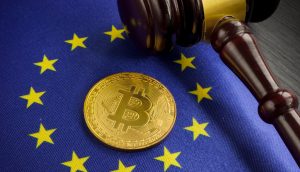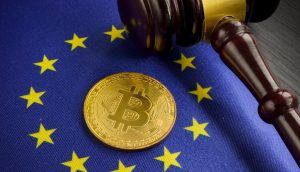With the EU Regulation on Markets in Crypto Assets (MiCAR), the European Union will in future create an EU-wide uniform definition of crypto assets. With MiCAR likely to come into effect in the second half of 2024, crypto assets will then be regulated as digital representations of an asset or right that can be electronically transferred and held using distributed ledger technology or comparable technology. In addition to the very broad general definition of crypto assets, the final version of the MiCAR also provides definitions for special forms of crypto assets. One of these special forms will be e-money tokens. This defines the MiCAR as a type of crypto value that tries to achieve a stable value by referencing an official currency.
Such e-money tokens have existed for a long time and play a central role in the international crypto markets. The cryptocurrencies USDT from the company Tether and USDC from the Joint Venture Center, which refer to the US dollar, currently occupy third and fourth place in terms of market capitalization, for example. Crypto group Binance’s BUSD, which also references the US dollar, ranks seventh by market capitalization and is therefore also a top ten crypto value.
read too
E-money has been regulated in the European Union since 2005 via the E-Money Directive. The E-Money Directive defines e-money as any electronically – including magnetically – stored monetary value in the form of a claim against the issuer, which is issued against payment of a sum of money in order to use it to make payment transactions and which can also be used by anyone other than the e- money issuer is accepted. The EU directive stipulates that e-money in the European Union may only be issued by approved credit institutions or by e-money institutions. The e-money business in the European Union is therefore a strictly and specifically regulated business area.
According to its wording, the definition of e-money in no way excludes the possibility of e-money being issued via a blockchain solution. A company that issues blockchain units that meet the e-money definition of the e-money directive will therefore in principle be considered an e-money institution within the meaning of the directive and will have to create the regulatory requirements for its business. In particular, such a company will have to obtain an e-money institution license if it wants to direct its business towards the European market. If, on the other hand, a crypto asset does not meet one of the requirements of the e-money definition, for example because there is no identifiable issuer, the regulatory regime of the e-money directive is generally not relevant.
read too

The MiCAR definition for e-money tokens is much broader than the e-money directive definition for e-money. As a result, not all e-money tokens necessarily meet the definition of e-money according to the e-money directive. Nevertheless, MiCAR orders in this respect that e-money tokens according to MiCAR should be treated like e-money within the meaning of the e-money directive. This equation is not unproblematic, because according to the MiCAR definition of e-money tokens, the existence of an issuer is not necessarily a prerequisite.
E-money tokens without an issuer would also be crypto assets and thus, for example, a suitable object of regulated crypto services. The e-money definition of the e-money directive, on the other hand, requires that e-money must be a claim against the issuer. Following this approach, almost all of the provisions of the E-Money Directive relate to the rights and obligations of e-money issuers. In any case, equating decentrally created e-money tokens with classic e-money by MiCAR is therefore meaningless.
Nevertheless, the MiCAR also stipulates that e-money tokens may only be offered by credit institutions or e-money institutions and that all holders of e-money tokens must be granted a claim against the issuer. On the other hand, e-money tokens that do not provide for any claims against the issuer should be prohibited. Nevertheless, such prohibited e-money tokens will also be crypto assets within the meaning of MiCAR and can therefore be objects of crypto services.
This article is first on the Fin Law Blog published.
Do you want to buy cryptocurrencies?
Trade the most popular cryptocurrencies like Bitcoin and Ethereum with leverage on Plus500, the leading CFD trading platform (77 percent of retail accounts lose money with the provider).
The latest issues of BTC-ECHO Magazine
You might also be interested in this
